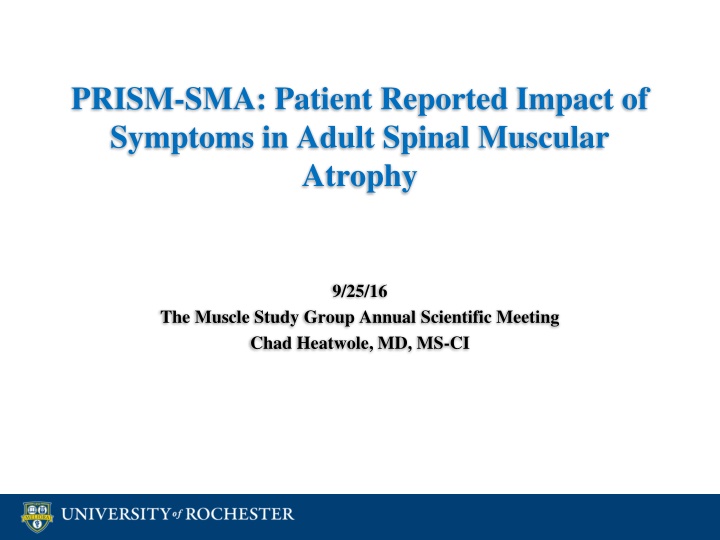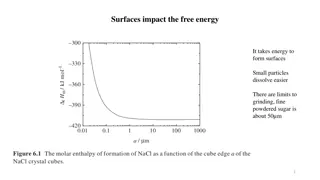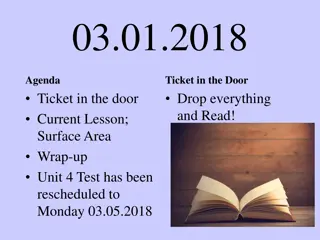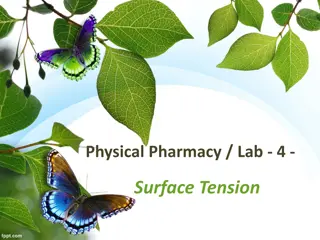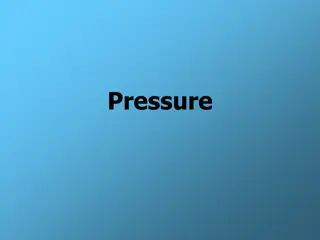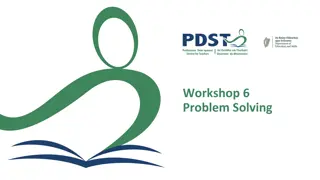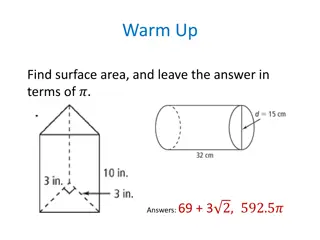Lesson on Surface Area Representation and Problem Solving
This engaging lesson focuses on representing rectangular and triangular prisms using nets and utilizing them to calculate surface area in both mathematical and real-world scenarios. Explore essential questions, warm-up activities, problem-solving tasks, and discovery activities to enhance understanding.
Download Presentation

Please find below an Image/Link to download the presentation.
The content on the website is provided AS IS for your information and personal use only. It may not be sold, licensed, or shared on other websites without obtaining consent from the author.If you encounter any issues during the download, it is possible that the publisher has removed the file from their server.
You are allowed to download the files provided on this website for personal or commercial use, subject to the condition that they are used lawfully. All files are the property of their respective owners.
The content on the website is provided AS IS for your information and personal use only. It may not be sold, licensed, or shared on other websites without obtaining consent from the author.
E N D
Presentation Transcript
PRISM-SMA: Patient Reported Impact of Symptoms in Adult Spinal Muscular Atrophy 9/25/16 The Muscle Study Group Annual Scientific Meeting Chad Heatwole, MD, MS-CI
Patient Reported Impact of Symptoms for Spinal Muscular Atrophy (PRISM-SMA) Continuation of our lab s work in DM1, DM2, FSHD, CMT, Huntington s Disease, Congenital DM, Juvenile DM, Kennedy s Disease, Inclusion body myositis, ALS 9 validated outcome measures Translated into 7 languages Both paper and electronic versions available Used in numerous pharma, NIH, FDA, foundation, and academic clinical trials
Important First Question: What symptoms and issues have the greatest impact on a SMA patient s life?
Specific Aim To use direct patient input to identify the symptoms that are most common to adult SMA patients. To use direct patient input to identify the symptoms that are most important to adult SMA patients.
Study Design Phase 1: Qualitative interviews with adult SMA patients Phase 2: Cross Sectional Validation Study with adult SMA patients registered with the International SMA Patient Registry
SMA Results 15 patients provided 1047 direct quotes 176 potential highly-relevant SMA symptoms were identified 14 major symptomatic themes 4 major domains (physical health, mental health, social health, and SMA specific symptoms)
Symptomatic Themes Gastrointestinal Issues Sleep Fatigue Body Image Breathing Pain Proximal Upper Extremity Function Hand Function Social Satisfaction Lower Extremity Function Emotional Issues Social Performance Mobility and Ambulation Ability to do Activities
Mobility and Ambulation Lower Extremity Function Physical Health Proximal Upper Extremity Function Hand Function Ability to do Activities Emotional Issues Mental Health 15 Spinal Muscular Atrophy Patient Interviews Spinal Muscular Atrophy Disease Burden Impaired Body Image 1047 Direct Patient Quotes Social Satisfaction Social Health Social Performance Fatigue Sleep Additional Spinal Muscular Atrophy Issues Breathing Pain Gastrointestinal Issues
Results Surveys sent to 1438 adult SMA patients worldwide 359 adult SMA patients responded >80,000 patient responses regarding 207 symptoms, 20 themes, and 10 demographic features
Demographics 51% Female Average Age: 42 43% employed Hispanic, Black, Asian, White, American Indian, Pacific Islander all represented 43 states represented 34 countries represented
Education Level and Ambulation Status Level of Education no. (%) Grade School High School Technical Degree College Master's or Doctorate None Omitted Ambulation Level no. (%) Independent Uses a cane Uses a walker Wheelchair or scooter Omitted 8 (2.23) 74 (20.61) 35 (9.75) 154 (42.90) 83 (23.12) 4 (1.11) 1 (.28) 43 (11.98) 27 (7.52) 11 (3.06) 277 (77.16) 1 (.28)
Symptoms that have the greatest overall impact on this population s lives (207 symptoms) Difficulty with stairs (3.3) Difficulty getting up from the floor or ground (3.2) Inability to run (3.2) Leg weakness (3.2)
TABLE 2: THEMES ASSOCIATED WITH EMPLOYMENT STATUS THEME Communication difficulties Choking or swallowing issues Breathing difficulties Gastrointestinal issues Pain Back, chest, or abdominal weakness Hip, thigh, or knee weakness Hearing difficulties Employed Prevalence (%) 18 36 45 54 61 90 92 6 Unemployed Prevalence (%) 30 60 60 65 76 96 98 15 P Value* 0.02 <0.001 <0.01 0.03 <0.01 0.03 <0.01 <0.01 *2 sided Fisher's Exact Test
Key Points from PRISM-SMA There are many issues and symptoms that have a varying level of impact on patients lives The most frequently occurring (or described) issue is not always the one that is most important to patients Employment status is associated with select areas of symptom burden
Utility of PRISM-SMA Helps physicians and researchers better identify and address areas of importance to patients Provides an estimate of expected disease burden by demographic classification Provides base information for the creation of a custom designed instrument to measure patient-relevant outcomes during upcoming clinical trials (treatment trials are forthcoming)
Thank You Michael Hunter, MD Nicholas Johnson, MD Connie Garland, BS CCRP Richard Moxley, MD Robert Holloway, MD, MPH Charles Thornton, MD Robert Griggs, MD James Hilbert, MS Tracy Forrester Liz Luebbe BS Bill Martens, BA Mike McDermott, Ph.D Nancy Chin, Ph.D. Eileen Eastwood Jeanne Dekdebrun David Herrmann, M.B.B.Ch. Nuran Dilek, MS Shree Pandya, PT, MS Kate Eichinger, PhD, PT, DPT, NCS Deb Guntrum, NP Cindy Gibson, NP Barbara Vickrey, MD (U.C.L.A.) David Cella, Ph.D. (PROMIS Network) Nan Rothrock, Ph.D (Northwestern, IL) Rita Bode, Ph.D. (PROMIS Network) David Victorson, Ph.D. (NeuroQol Network) Ora Prilleltensky, Ed.D. (University of Miami) John Day, M.D., Ph.D. (Stanford, California) John Kissel, M.D. (The Ohio State, Ohio) Kevin Flanigan, M.D. (Nationwide Children s, Ohio) Kenneth Fischbeck, M.D. (NIH) Tatiana Foroud, Ph.D. (Indiana University, Indiana) Valeria Sansone, MD (Italy) Giovanni Meola, MD (Italy) Masanori Takahashi (Japan) Baziel Van Engelen, MD, Ph.D. (Nijmegen, Netherlands) Benedikt Schoser, MD (Munich, Germany) Silvere van de Maarel, Ph.D. (University of Leiden) Richard Lemmers, Ph.D. (University of Leiden) Michael Rose, M.D. (Kings College, United Kingdom) Craig Campbell, M.D. (University of Western Ontario, Canada) Anne-Berit Ekstroem, MD, PhD (Queen Silvia Children s Hospital, Sweden)
Patient Reported Impact of Symptoms for Spinal Muscular Atrophy (PRISM-SMA)
Symptoms that have the greatest impact on patients lives (207) Difficulty with stairs (3.6) Difficulty getting up from the floor or ground (3.6) Difficulty walking up hills or inclines (3.5) Inability to run (3.5) Inability to walk fast (3.5) Difficulty walking long distances (3.5) Fatigue when walking distances (3.5)
TABLE 1: DEMOGRAPHIC INFORMATION No. of patients Sex (#) Male Female Omitted Age, y Mean (Std) Range Race no. (%) American Indian/Alaskan White Asian Pacific Islander/Hawaiian Black Other Omitted SMA Type reported no. (%) I II III IV Unknown Omitted Hispanic no. (%) Employed no. (%) Level of Education no. (%) Grade School High School Technical Degree College Master's or Doctorate None Omitted Ambulation Level no. (%) Independent Uses a cane Uses a walker Wheelchair or scooter Omitted Ability to Stand (%) Can Stand Used to be able to stand Have never stood Omitted States Represented Countries Represented 359 174 183 2 41.9 (15.3) 18 to 81 1 (.28) 330 (91.92) 11 (3.06) 2 (.56) 2 (.56) 12 (3.34) 1 (.28) 16 (4.46) 132 (36.77) 144 (40.11) 30 (8.36) 34 (9.47) 3 (.84) 22 (6.13) 153 (42.62) 8 (2.23) 74 (20.61) 35 (9.75) 154 (42.90) 83 (23.12) 4 (1.11) 1 (.28) 43 (11.98) 27 (7.52) 11 (3.06) 277 (77.16) 1 (.28) 93 (25.91) 164 (45.68) 100 (27.86) 2 (.56) 43 34
States with no participants: Alaska, Delaware, Hawaii, Idaho, New Hampshire, North Dakota, South Dakota
